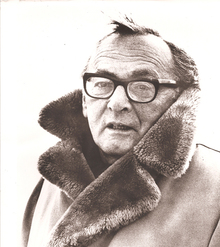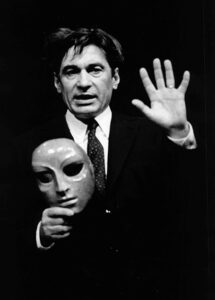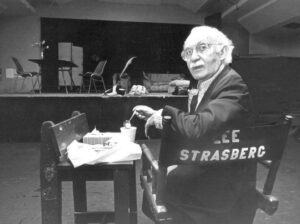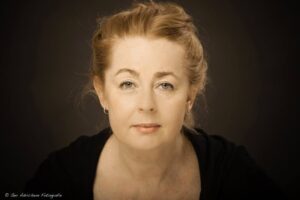About Mulholland Academy
The Mulholland Acting and Film Academy is an English language acting studio in Amsterdam, founded in 2010. The international program offers professional training, offering short and long-term classes mostly on evenings and weekends, allowing students to hold down a job and train outside office hours.
We offer well-rounded study providing training for the body, the voice, and the emotional life of the actor.
We expect our students to take their craft seriously. We work with pre-professionals and professionals who want to train or keep training.
Acting Techniques
Meisner Technique
“Acting is the ability to live truthfully under imaginary circumstances.” Sanford Meisner
 The late Sanford Meisner was an enormously influential acting teacher who taught at New York’s Neighborhood Playhouse for fifty years. One of the original members of the Group Theatre, he was part of a generation of American acting coaches who further developed the work of Russian director Constantin Stanislavski.
The late Sanford Meisner was an enormously influential acting teacher who taught at New York’s Neighborhood Playhouse for fifty years. One of the original members of the Group Theatre, he was part of a generation of American acting coaches who further developed the work of Russian director Constantin Stanislavski.
Sanford Meisner was co-founder of the Group Theatre, together with Lee Strasberg and Stella Adler. Meisner Training is an interdependent series of training exercises that build on one another. The more complex work supports a command of dramatic text. Students work on a series of progressively complex exercises to develop an ability to first improvise, then to access an emotional life, and finally to bring the spontaneity of improvisation and the richness of personal response to textual work. The technique is used to develop improvisation skills as well as “interpreting a script’, and creating the specific physical characteristics of each character the actor plays.
Throughout his career, Meisner worked with, and taught, students who became well known, such as Sandra Bullock, David Duchovny, James Franco, Michelle Pfeiffer, Naomi Watts, Tom Cruise, Alec Baldwin, Jon Voight, Dylan McDermott, Eileen Fulton, James Caan, Steve McQueen, Robert Duvall,Gregory Peck, Eli Wallach, Jack Lord, Bob Fosse, Diane Keaton, Robert Duvall, Lee Grant, Peter Falk, Jeff Goldblum, Grace Kelly, James Doohan, Jason Boss, Manu Tupou, Tony Randall and Sydney Pollack. Pollack together with Charles E. Conrad served as Meisner’s senior assistants. The technique is helpful not just for actors, but also for directors, writers, and teachers. A number of directors also studied with him, among them Sidney Lumet and John Frankenheimer, and writers such as Arthur Miller and David Mamet.
Jacques Lecoq
Movement, the actor, space, stage and audience.
“Improvisation is at the heart of the  educational process and is sometimes confused with expression. Yet a person expressing himself is not necessarily being creative. The ideal, of course, would be for creation and expression to go hand in hand, in perfect harmony. Unfortunately many people enjoy expressing themselves, ‘letting it all hang out’, and forgetting that they must not be the only ones to get pleasure from it: spectators must receive pleasure, too.
educational process and is sometimes confused with expression. Yet a person expressing himself is not necessarily being creative. The ideal, of course, would be for creation and expression to go hand in hand, in perfect harmony. Unfortunately many people enjoy expressing themselves, ‘letting it all hang out’, and forgetting that they must not be the only ones to get pleasure from it: spectators must receive pleasure, too.
The difference between the act of expression and the act of creation is this: in the act of expression one plays for oneself alone rather than for any spectators. I always look for an actor who ‘shines’, who develops a space around himself in which the spectators are also present. Many absorb this space into themselves, excluding spectators, and the experience becomes too private.
The critical comments one makes about the work do not attempt to distinguish the good from the bad, but rather to separate what is accurate and true from what is too long or too brief, what is interesting from what is not. This might appear pretentious but the only thing that interests us is what is accurate and true: an artistic angle, an emotion, even a color combination. All these aesthetic elements can be found in any durable work of art, independent of its historical dimension. They can be sensed by anyone and an audience always knows perfectly well when something is accurate and true. They may not know why, but it is up to us to know, because we are, after all, we are specialists. ” Jacques Lecoq.
Strasberg Technique
The Lee Strasberg Method Acting  Technique focuses on the internal experiences and not on the expression through speech. It is grounded in the human truth of the moment. It helps actors to become emotionally free enough so that their body, mind, spirit, thoughts and speech are able to be combined in one full and true expression. To create real feelings and thoughts under imaginary circumstances.
Technique focuses on the internal experiences and not on the expression through speech. It is grounded in the human truth of the moment. It helps actors to become emotionally free enough so that their body, mind, spirit, thoughts and speech are able to be combined in one full and true expression. To create real feelings and thoughts under imaginary circumstances.
To make use of their knowledge of human psychology, the process of conditioning, the interaction between the conscious and the subconscious and the process of creative imagination. It helps actors to get rid of their inhibitions, blockage and to eliminate bad habits of voice and movement, so they will be able to express the uniqueness of their character.
They become actors with interesting behavior and imagination. It helps the actors to go beyond the writers words and intentions, so that they can elevate the material and make it their own, giving it their own color. It allows their impulses to surface, to have an inner life and subtext, to trust their instinct and to allow their silences.
The actors will learn how to interpret life in all its facets, so that their experiences can be called upon in the expression of art.
Among the actors who practice Lee’s technique are, Daniel Day-Lewis, Adrien Brody, Al Pacino, Robert de Niro, Johnny Depp, Nicole Kidman, Cate Blanchett, Bradley Cooper, Christian Bale, Meryl Streep, Angelina Jolie, Matthew McConaughey and many more.
“Strasberg meant that what is called “Method Acting” is nothing new, but rather as old as Western Civilization itself. For centuries, cultures used different words and phrases to describe “good” acting: Romantic Acting, Emotional Acting, Divine Inspiration, The Muses, Feeling the Role. These terms merely described an organic process of creativity that talented actors used, often times unconsciously, to accomplish what audiences experienced as a moving performance. This was the (re)experiencing of life by the actor within the fiction of the story as if it were true and happening now. Aristotle said that the secret to moving the passions in others is to be moved oneself, and that moving oneself is made possible by bringing to the fore “visions” of experiences from life that are no longer present. Aristotle was stating the core principle of The Lee Strasberg Method™ — the creative play of the affective memory in the actor’s imagination as the foundation for (re)experiencing on stage.
Credit: from http://newyork.methodactingstrasberg.com/what-is-method-acting/
This idea was first called the ‘System’ by Konstantin Stanislavsky, and later, as further developed by Lee Strasberg (at the Group Theatre, the Actors Studio and then at the Institute). The Lee Strasberg Method™ trains actors to use their imagination, senses and emotions to conceive of characters with unique and original behavior, creating performances grounded in the human truth of the moment.”
ReFocusMethod

Getting out of the head and into the presence
ReFocusMethod removes psychological complexity from acting, making it simpler, more joyful, and clearer. Performance will be more consistent and convincing, particularly when preparation time for a scene or take is limited.
Focus and relaxation are essential for portraying the truth, moving with the truth, and delivering text and emotions as truth. The actor must be aware of muscular tensions, mental and physical habits. With ReFocusMethod, actors are able to develop a sixth sense, which allows them to identify and use the right amount of body tension, be precise about where the attention and energy are directed, and so be fully present.
As emotions are a physical response to outside stimuli, or to a mental process (thinking), actors can consciously explore facial expressions, breathing, and posture to access, control, and feel real emotions within a short time of preparation, and also let go of them on demand. Actors create the truth in relations, text, emotion, and movement through their focus on their physical experience and their attention to other character(s) or the environment.
Actor self and Character self
To let a character live its own life the actor must leave it alone, striving to give up control of the character.ReFocusMethod creates a clear distinction between an actor’s self and the self of the character. It helps actors create the courage and trust to not controlling the process and not having to show or pretend stuff (to act). Let the character be in the moment. As a result, the actor will get in to a mental state of flow, allowing the character to surprise the actor.
Once they learned the ReFocusMethod actors can continue to explore and develop their instrument in daily life, based on the exercises and experiences they had in class.
History
Its roots can be traced back to the Swedish National Acting Academy of the 1960s, where Andris Blekte (1923-2007) taught for more than 30 years and became well known for his relaxation and body awareness techniques.
Tony Grahn became a professional actor in 1986. In 1991, he graduated from the Swedish National Acting Academy. As a student of Andris Blekte’s classes, he experienced a powerful change that inspired him to further develop his technique. After graduating from Drama Studio London in 1996, he worked as a director for several years. Tony began teaching the method at The Actors Centre London in 1999. Since then, he has developed it further through his teaching experience and studying the nature of human behavior.


